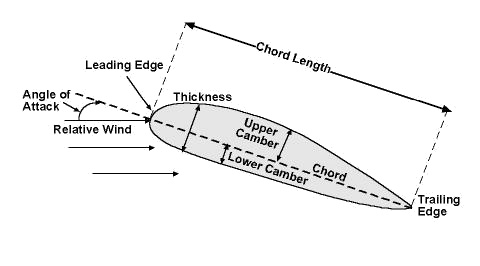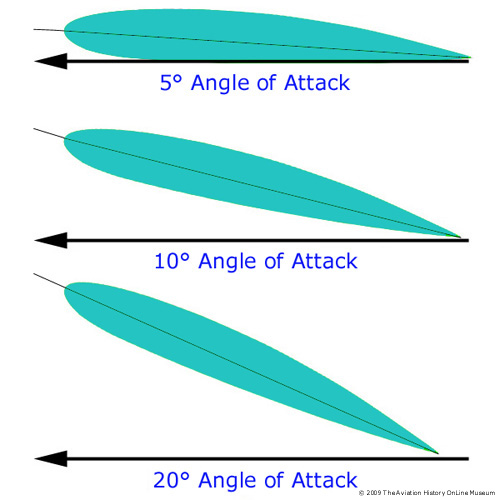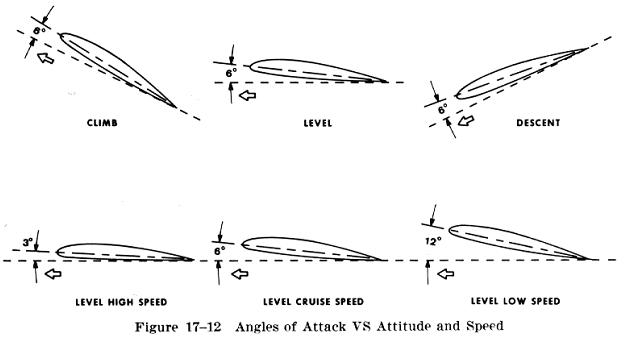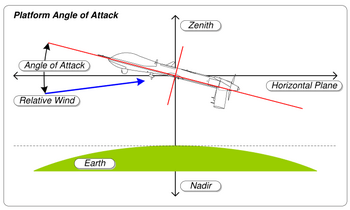Angle of attack
The angle of attack (English: angle of attack, AOA ) is in the aerodynamics of the angle between the direction of the inflowing fluid and the tendon of a profile. The profile may for example be part of a support surface of a rotor blade, of a sail, or a turbine blade. The size of the pitch, paired with the flow velocity, the size of the dynamic lift. It is therefore an important parameter in the operation of aircraft, wind turbines, turbines or sailboats.
Basics
In the second diagram beside the relationship between angle of attack α and the coefficient of dynamic lift CL is shown. It can be seen that the buoyancy becomes larger angle is first also increases. However, he then reaches a maximum before it decreases again. The reason for this is that when it reaches the maximum lift, the flow begins to separate from the profile. In a further increase in the angle of attack results in a flow separation in whole. This reduces drastically the buoyancy.
In steady flight, the angle of attack through the center and by the position of the elevator is affected. The buoyant force is proportional to the speed of the aircraft relative to the air. For the same angle of attack of the wings generates a lifting smaller than at high speed at low speed. In straight and level flight lift must be so large that it compensates for the weight of the aircraft. Therefore, slow flying requires a very large angle of attack. Since the buoyancy beyond a characteristic of the respective airfoil velocity decreases again, this determines the minimum speed at which an aircraft can fly ( vmin ).
Special
In a few of the aircraft angle of attack without any attitude change on changing of the pitch of the supporting surface is controlled in relation to the fuselage, for example in the Vought F -8. The angle of attack also changes when the profile by extension of slats or flaps is changed, or when it moves through up or down drafts. The buoyancy can be increased by strakes above the critical angle of attack also.
For helicopters the pitch of the rotor blades of the main rotor is controlled uniformly or dependent on the angle of the swash plate, which changes the angle of attack. For controllable pitch is changed in the same way with the change of the pitch angle of attack and thus the thrust.
The same is true for modern wind turbines. Use the change in the pitch of the rotor blades for power control. In this case, the aerodynamic efficiency of the rotor is adjusted by reduction of the buoyancy, so that the power rating of the generator is not exceeded.
In the sport of sailing is the choice of the right angle of attack important part of the sail trims. The angle of attack of the sail has to be matched to the instantaneous sail shape ( curvature of the sail ), as it is changed in contrast to conventional support surfaces through the use of trimming devices or passive by increasing or decreasing the wind pressure.
Angle of attack and pitch angle to be confused more often. The two terms but have nothing in common.










